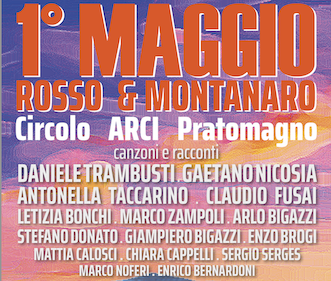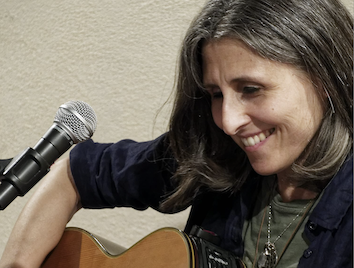2 febbraio 2021

"Fu Masaccio optimo imitatore di natura,
di gran rilievo universale,
buono componitore et puro senza ornato,
perché solo si decte all'imitatione del vero et a rilievo delle figure:
fu certo buono et prospectivo quanto altro di quegli tempi,
et di gran facilità nel fare, essendo ben giovane,
che morì d'anni ventisei".
Cristoforo Landino
"Commento di Critoforo Landino fiorentino sopra la comedia di Dante Alighieri poeta fiorentino"
Firenze, 1481
PER MASACCIO 1401 - 2001
________________________________________________________
Stefano Beccastrini
Nel 2001, annunciati dalla ricomparsa di un nero e gigantesco monolite, torneranno sulla terra tutti quei nostri progenitori la cui nascita Stanley Kubrick ci aveva annunciato, nel 1968, col suo "Odissea Nello Spazio". Tra loro, se non altro per festeggiare con noi il sesto centenario della sua nascita avvenuta nel 1401 a San Giovanni Valdarno, ci sarà anche Tommaso Cassai detto Masaccio.
Sappiamo di lui che, recatosi a Firenze e divenuto amico di genialità e di bagordi con Donatello e Brunelleschi, invento l'Arte Moderna. Mirando i suoi affreschi, Michelangelo imparò a dipingere e Goethe a capire la vera pittura.
L'Uomo della Modernità, quello strenuamente piantato con i piedi sulla terra piuttosto che presuntuosamente proiettato con la testa verso il cielo, nacque nei suoi rari, commoventi affreschi. Da lì vengono Amleto e Robinson Crusoe, il Leopardi personaggio delle poesie di un infelice patrizio recanatese e il capitano Achab, il Corsaro Nero e Ulisse (quello di Joyce, novecentesca incarnazione di quello di Omero), Che Guevara e il professor Keating, il dottor Jekyll e mister Hide.
Un gigante fu Masaccio, nella storia dell'arte ma ancor più in quella del pensiero (figurativo o letterario, filosofico o scientifico: che differenza fa?) dell'Occidente. Nacque sei secoli fa, e per i nostri libri di Storia è dunque un uomo del passato.
Ma quando saremo lì a riceverlo, accompagnati dal professor Lacombe-Truffaut di "Incontri Ravvicinati del Terzo Tipo", noi terrestri invecchiati vedremo scendere, dall'astronave che viene dal Cielo, un trasandato ragazzone non di seicento ma di ventisette anni (tanti ne aveva quando morì per cause sconosciute, in Roma).
E scenderanno, con lui, altri giovani alieni: Lucrezio e Modigliani, Rimbaud e Mozart, Van Gogh e Lautremont, Charlie Parker e Christopher Marlowe, Jean Vigo e Jim Morrison, Caravaggio e Jimi Hendrix, Janis Joplin e James Dean, Evariste Galois e Paul Nizan.
Eterni ragazzacci che ci sconvolgeranno.
Se le Forze dell'Ordine non li arresteranno prima, ne vedremo delle belle!
Io spero di esserci.
----------
In 2001, the reappearance of a black and gigantic monolith will herald the return to Earth of all our ancestors whose birth we were informed of by Stanley Kubrick, in 1968, in his "Space Odyssey". Amongst them, if only to celebrate with us the sixth centenary of his birth which took place in 1401 in San Giovanni Valdarno, there will also be Tommaso Cassai known as Masaccio.
We know of him that, having gone to Florence and formed friendships with Donatello and Brunelleschi with whom he shared both talent and a taste for revelry, he invented Modern Art. Gazing at his frescoes, Michelangelo learned to paint and Goethe to understand real painting.
Modern Man, the one with his feet bravely planted on the ground rather than with his head presumptiously projected towards the sky, took life in his rare, moving frescoes. From there too come Hamlet and Robinson Crusoe, the Leopardi character in the poems of an unhappy aristocrat from Recanati and Captain Achab, the Black Corsair and Ulysses (Joyce's one, the 20th century incarnation of Homer's), Che Guevara and Prof. Keating, Dr. Jekyll and Mr. Hyde.
Masaccio was a giant, in the history of art but even more so in the history of Western thinking (figurative or literary, philosophical or scientific: what difference does it make?). He was born six centuries ago, and for our history books he is therefore a man who belongs to the past.
But when we are there to welcome him, accompanied by Prof. Lacombe-Truffaut of "Close Encounters of the Third Kind", we aged earthlings will see, leaving the spaceship come from the Sky, not an untidy, strapping fellow of six hundred but one of twenty seven (that was his age when he died of unknown causes, in Rome).
And leaving with him will be other young aliens: Lucrezio and Modigliani, Rimbaud and Mozart, Van Gogh and Lautremont, Charlie Parker and Christopher Marlowe, Jean Vigo and Jim Morrison, Caravaggio and Jimi Hendrix, Janis Joplin and James Dean, Evariste Galois and Paul Nizan. Eternal bad boys who will turn us topsy-turvy.
As long as the police don't arrest them first, who knows what they'll get up to!
I hope I'll be there.
[ testo che sarebbe dovuto essere di presentazione a un disco dedicato a Masaccio, progettato nel 1999 da Giampiero Bigazzi con Paul Lemos di Controlled Bleeding per la Materiali Sonori, e poi mai realizzato ]
Puro Senza Ornato... Masaccio [Stefano Beccastrini]
PURO SENZA ORNATO
"Fu Masaccio optimo imitatore di natura,
di gran rilievo universale,
buono componitore et puro senza ornato,
perché solo si decte all'imitatione del vero et a rilievo delle figure:
fu certo buono et prospectivo quanto altro di quegli tempi,
et di gran facilità nel fare, essendo ben giovane,
che morì d'anni ventisei".
Cristoforo Landino
"Commento di Critoforo Landino fiorentino sopra la comedia di Dante Alighieri poeta fiorentino"
Firenze, 1481
PER MASACCIO 1401 - 2001
________________________________________________________
Stefano Beccastrini
Nel 2001, annunciati dalla ricomparsa di un nero e gigantesco monolite, torneranno sulla terra tutti quei nostri progenitori la cui nascita Stanley Kubrick ci aveva annunciato, nel 1968, col suo "Odissea Nello Spazio". Tra loro, se non altro per festeggiare con noi il sesto centenario della sua nascita avvenuta nel 1401 a San Giovanni Valdarno, ci sarà anche Tommaso Cassai detto Masaccio.
Sappiamo di lui che, recatosi a Firenze e divenuto amico di genialità e di bagordi con Donatello e Brunelleschi, invento l'Arte Moderna. Mirando i suoi affreschi, Michelangelo imparò a dipingere e Goethe a capire la vera pittura.
L'Uomo della Modernità, quello strenuamente piantato con i piedi sulla terra piuttosto che presuntuosamente proiettato con la testa verso il cielo, nacque nei suoi rari, commoventi affreschi. Da lì vengono Amleto e Robinson Crusoe, il Leopardi personaggio delle poesie di un infelice patrizio recanatese e il capitano Achab, il Corsaro Nero e Ulisse (quello di Joyce, novecentesca incarnazione di quello di Omero), Che Guevara e il professor Keating, il dottor Jekyll e mister Hide.
Un gigante fu Masaccio, nella storia dell'arte ma ancor più in quella del pensiero (figurativo o letterario, filosofico o scientifico: che differenza fa?) dell'Occidente. Nacque sei secoli fa, e per i nostri libri di Storia è dunque un uomo del passato.
Ma quando saremo lì a riceverlo, accompagnati dal professor Lacombe-Truffaut di "Incontri Ravvicinati del Terzo Tipo", noi terrestri invecchiati vedremo scendere, dall'astronave che viene dal Cielo, un trasandato ragazzone non di seicento ma di ventisette anni (tanti ne aveva quando morì per cause sconosciute, in Roma).
E scenderanno, con lui, altri giovani alieni: Lucrezio e Modigliani, Rimbaud e Mozart, Van Gogh e Lautremont, Charlie Parker e Christopher Marlowe, Jean Vigo e Jim Morrison, Caravaggio e Jimi Hendrix, Janis Joplin e James Dean, Evariste Galois e Paul Nizan.
Eterni ragazzacci che ci sconvolgeranno.
Se le Forze dell'Ordine non li arresteranno prima, ne vedremo delle belle!
Io spero di esserci.
----------
In 2001, the reappearance of a black and gigantic monolith will herald the return to Earth of all our ancestors whose birth we were informed of by Stanley Kubrick, in 1968, in his "Space Odyssey". Amongst them, if only to celebrate with us the sixth centenary of his birth which took place in 1401 in San Giovanni Valdarno, there will also be Tommaso Cassai known as Masaccio.
We know of him that, having gone to Florence and formed friendships with Donatello and Brunelleschi with whom he shared both talent and a taste for revelry, he invented Modern Art. Gazing at his frescoes, Michelangelo learned to paint and Goethe to understand real painting.
Modern Man, the one with his feet bravely planted on the ground rather than with his head presumptiously projected towards the sky, took life in his rare, moving frescoes. From there too come Hamlet and Robinson Crusoe, the Leopardi character in the poems of an unhappy aristocrat from Recanati and Captain Achab, the Black Corsair and Ulysses (Joyce's one, the 20th century incarnation of Homer's), Che Guevara and Prof. Keating, Dr. Jekyll and Mr. Hyde.
Masaccio was a giant, in the history of art but even more so in the history of Western thinking (figurative or literary, philosophical or scientific: what difference does it make?). He was born six centuries ago, and for our history books he is therefore a man who belongs to the past.
But when we are there to welcome him, accompanied by Prof. Lacombe-Truffaut of "Close Encounters of the Third Kind", we aged earthlings will see, leaving the spaceship come from the Sky, not an untidy, strapping fellow of six hundred but one of twenty seven (that was his age when he died of unknown causes, in Rome).
And leaving with him will be other young aliens: Lucrezio and Modigliani, Rimbaud and Mozart, Van Gogh and Lautremont, Charlie Parker and Christopher Marlowe, Jean Vigo and Jim Morrison, Caravaggio and Jimi Hendrix, Janis Joplin and James Dean, Evariste Galois and Paul Nizan. Eternal bad boys who will turn us topsy-turvy.
As long as the police don't arrest them first, who knows what they'll get up to!
I hope I'll be there.
[ testo che sarebbe dovuto essere di presentazione a un disco dedicato a Masaccio, progettato nel 1999 da Giampiero Bigazzi con Paul Lemos di Controlled Bleeding per la Materiali Sonori, e poi mai realizzato ]
EVENTI & CONCERTI
15 maggio 2025
in memoria di SALVATORE CARNEVALE
sindacalista ucciso dalla mafia nel 70mo Anniversario del suo assassinio
presentazione dello spettacolo "NON ERA SANTO MA I MIRACOLI FACEVA"
Intervengono Chiara Cappelli, Sergio Serges, Arlo Bigazzi
e Alessandro Tracchi, CGIL; Andrea Ghiandelli, CGIL; Giorgio Valentini, Legambiente Valdarno superiore; Pierluigi Ermini, Referente Libera Valdarno. Saluti di Gianluca Monicolini, Cooperativa Progresso Montevarchi
MONTEVARCHI. Casa del Popolo - ore 17.3016 maggio 2025
Primavera a Teatro: CHIARA CAPPELLI SERGIO SERGES. ARLO BIGAZZI
[NON ERA SANTO MA I MIRACOLI FACEVA
Salvatore Carnevale, sindacalista ucciso dalla mafia]
Produzione: Materiali Sonori
Cavriglia (AR) . Teatro Comunale
[Possa la mia vita servire]18 maggio 2025
PRE-ORIENTOCCIDENTE 2025 : Alice Howe & Freeb
Rock In Bottega!
PIANDISCO' (AR) . via Roma - Macelleria Buccianti23 maggio 2025
GAETANO NICOSIA
in concerto
RIGNANO SULL'ARNO (FI) . Ridotto del Teatro Bruschi24 maggio 2025
Primavera a Teatro: COMPAGNIA DEL LONFO
[ACCIDENTI A I’ CONDOMINIO]
di Alfonso Ciuti
regia di Gianna Chini.
Cavriglia (AR) . Teatro Comunale
[L’Urgenza del Teatro]24 maggio 2025
Stefano Saletti
"Mediterranima!
Pontedera (PI). Centrum Sete Sóis Sete Luas30 maggio 2025
Primavera a Teatro: DIESIS TEATRANGO
[QUADRI D’AUTORE - Scene dall’umano e da altre storie]
Direzione artistica: Piero Cherici, Barbara Petrucci
Progetto Laboratorio Permanente di Teatro Sociale
Cavriglia (AR) . Teatro Comunale
[Possa la mia vita servire]6 giugno 2025
Una Notte A Terranuova
TERRANUOVA BRACCIOLINI (AR) . Piazza Repubblica
7 giugno 2025
Kabila
Lugano (Svizzera) . Studio Foce - ore 20.3025 giugno 2025
BRAT (Federico Bratovich)
TORINO . Osteria Rabezzana30 giugno 2025
Alta Madera
Ruben Chaviano. Mino Cavallo. Filippo Pedol
Castelnuovo Garfagnano (LU)
4 luglio 2025
ORIENTOCCIDENTE 2025 : GIACOMO ROSSETTI
CASTELNUOVO DEI SABBIONI - CAVRIGLIA .
piazza della Repubblica
[L'Urlo della Memoria]7 luglio 2025
LA NOSTRA MEMORIA INQUIETA: BEETLEJUICE BEETLEJUICE
[ IL CINEMA DI TIM BURTON ] fim in pellicola...
San Giovanni Valdarno (AR) . piazza Cesare Battisti13 luglio 2025
ORIENTOCCIDENTE 2025 : BOBO RONDELLI
& MUSICA DA RIPOSTIGLIO in "Storie Assurde"
Castelnuovo dei Sabbioni/Cavriglia (AR) . piazza della Repubblica14 luglio 2025
LA NOSTRA MEMORIA INQUIETA: VINCENT + EDWARD MANI DI FORBICE
[ IL CINEMA DI TIM BURTON ] fim in pellicola...
San Giovanni Valdarno (AR) . piazza Cesare Battisti21 luglio 2025
LA NOSTRA MEMORIA INQUIETA: ED WOOD
[ IL CINEMA DI TIM BURTON ] fim in pellicola...
San Giovanni Valdarno (AR) . piazza Cesare Battisti26 luglio 2025
ORIENTOCCIDENTE 2025 : FLAME PARADE
[BETA BAR SPECIAL SUMMER]
Terranuova Bracciolini (AR) . Beta Bar29 luglio 2025
LA NOSTRA MEMORIA INQUIETA: MARS ATTACKS!
[ IL CINEMA DI TIM BURTON ] fim in pellicola...
San Giovanni Valdarno (AR) . piazza Cesare Battisti29 luglio 2025
ORIENTOCCIDENTE 2025 : TRINADAMAS & BANDIDAS
[Notti d'Ambra]
Ambra / Bucine . Piazza Garibaldi4 agosto 2025
LA NOSTRA MEMORIA INQUIETA: FRANKENWEEINE + LA SPOSA CADAVERE
[ IL CINEMA DI TIM BURTON ] fim in pellicola...
San Giovanni Valdarno (AR) . piazza Cesare Battisti
THE BIG CATALOGUE

WHAT'S HAPPENING
13 maggio 2025

Anteprima Orientoccidente: Rock in Bottega con la grande musica americana a Piandiscò > 18.05.2025.
4 maggio 2025
L'Associazione Paro Paro presenta "TERRORE UNA COMMEDIA DA PAURA" al Teatro Comunale di Cavriglia > 09.05.2025
2 maggio 2025

11-16 maggio 2025 > UNA SETTIMANA DEDICATA AL RICORDO DI SALVATORE CARNEVALE, SINDACALISTA UCCISO DALLA MAFIA
29 aprile 2025
i LILIUM con "LA BANDA DEI BENEFATTORI": inizia la "Primavera a Teatro" al Teatro Comunale di Cavriglia > 03.05.2025
26 aprile 2025

Primo Maggio di canzoni e liberi pensieri a Modine-Gorgiti (Loro Ciuffenna) > 01.05.2025
20 aprile 2025
.jpg)
Il 25 APRILE esce "MEDITERRANIMA" il nuovo disco di Stefano Saletti. Presentazione dal vivo, 8 maggio a Roma all\'Auditorium Parco della Musica.
2 aprile 2025
FRANCESCO MARINI & SILVANO ALPINI con "Variazioni Enigmatiche" al Teatro Comunale di Cavriglia > 11.04.2025
27 marzo 2025
CHIARA CAPPELLI con ARLO BIGAZZI e COSIMO BONI in "Resterò Testimone" a Firenze > 02.04.2025
12 marzo 2025

chitarre e voce: BRAT in concerto a Rignano sull'Arno > 21.03.2025
8 marzo 2025
.jpg)
presentazione dei libri di Enrico Fink e di Filippo Boni alla Libreria Spazio Officina di Montevarchi > 16.03.2025 - ore 18
2 marzo 2025

la cantautrice LETIZIA FUOCHI presenta dal vivo il suo nuovo disco "La Scelta" a Firenze al Teatro di Rifredi > 08.03.2025
28 febbraio 2025

CHIARA CAPPELLI con ARLO BIGAZZI e COSIMO BONI in "Resterò Testimone" a Rignano sull\'Arno > 07.03.2025.
FACEBOOK

